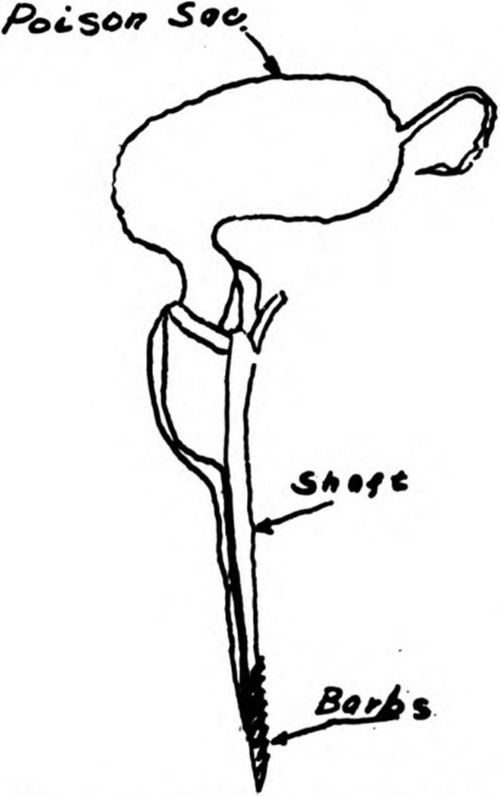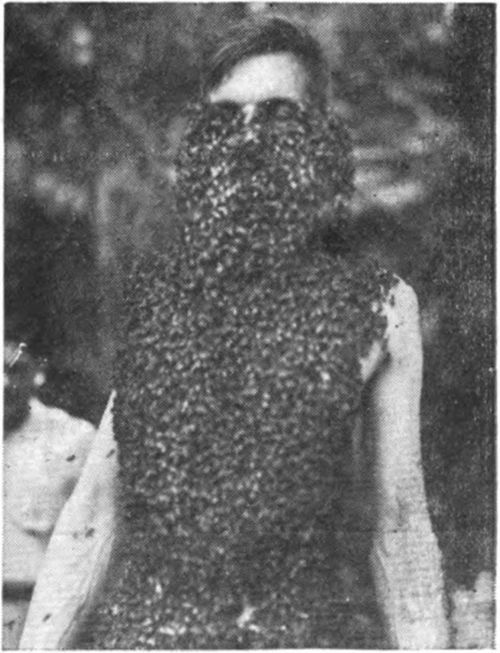A Preview Of Beekeeping. Part 2
Description
This section is from the book "How To Keep Bees And Sell Honey", by Walter T. Kelley. Also available from Amazon: How To Keep Bees And Sell Honey.
A Preview Of Beekeeping. Part 2
Who Cannot Keep Bees
There are a few individuals who are allergic to bee stings and if stung they soon become unconscious. Such individuals should keep away from bees and should always carry with them medicants to counteract this allergic condition.
We are told that anti-histamine tablets, which are sold as relief of colds and hay fever, are excellent for counteracting the normal effects of bee stings but these do not act rapidly enough in severe cases of allergy. In cases of this kind a doctor should be contacted immediately and an injection of ADRENALIN should be given, the individual remaining as quietly as possible. Adrenalin can also be obtained in capsules but it does not act as fast as an injection. Anyone who is extremely allergic to bee stings should have one form or the other on his person at all times.
The Stinger
Everyone, even city people who never saw a colony of bees, know about and fear the sting of a bee. This fear is well-founded because bees do sting and stings are painful, especially to the majority of people who do not know how to remove the stinger without injecting most of the poison into the body.
The worker bees, which compose the great majority of the colony, all have stingers and will sting if provoked. The drones (the large male bees), often seen at the entrance of the hive, do not have a stinger so cannot sting even though you pinch them to death. The Queen bee, normally the mother of all the bees in a colony, remains inside the hive and is seldom seen by the average beekeeper. She has a stinger but will not use it except to sting another bee, usually a queen bee.

A greatly enlarged view of the bee stinger showing the poison sac and the barbed stinger. Scrape off the stinger with the thumb nail quickly and most of the poison will drop to the ground still in the sac.
While the stinger is small it can be readily seen by the naked eye. As a rule, when a bee stings, the stinger is left in the flesh with the poison sac attached and appears like the enlarged drawing here. If you will examine the stinger closely, after the bee has pulled her body free, you will notice that the muscles in the poison sac keep contracting and forcing the poison contained in the sac down through the stinger and into the flesh.

Jay Smith had a dressy bee-beard known the world over.

Bees do sting but this man caged the queen, tied her to his chin expecting to get a set of bee whiskers but got a bee suit instead. The bees were removed smoking and brushing.
The experienced beekeeper on being stung immediately scrapes the stinger out with his thumb nail or his hive tool. This scraping operation either pulls out the stinger or breaks off the poison sac so that only a little of the poison enters the flesh. The point of the stinger either works its way out of the flesh or is absorbed by the body and will cause no harmful effect.
The inexperienced individual usually attempts to pick out the stinger with his thumb and forefinger and in doing this he squeezes on the poison sac and injects the entire contents into the skin. This causes extreme pain and swelling and convinces many a would-be-beginner that the bees stings are too toxic for his body to stand, when in fact an experienced beekeeper does not receive as much poison from a dozen or more stings as the beginner does from one.

Let this be a lesson to always wear your veil when working with the bees. If you have only a few colonies you may open the hives many times without a sting but when stung near the eyes or nose, OH BOY.
You cannot see to remove the stinger properly and before you get it out you nearly always inject all of the poison.
Immunity To Bee Stings
Your author as a boy had his eyes swollen shut several times and all stings created excessive swelling, usually making the swollen part feverish. In the course of time, however, immunity was built up so that now a mosquito bite is more serious than a bee sting except when the sting is on some tender part of the body, as near the eyes or on the nose. A great many of people, however, are immune to stings from the start and while the sting may hurt these people as badly as anyone the affected area does not swell as on other individuals.
Bee Stings As A Cure For Arthritis
Bee stings for years have been known to cure some kinds of arthritis and rheumatism and hundreds of sufferers have been cured. Your author is no doctor however and so refers you to the book, "BEE VENOM THERAPY, ITS NATURE AND EFFECT ON ARTHRITIC AND RHEUMATIC CONDITIONS, " by Bodog Beck published by Apple-ton-Century Co., New York, New York. This doctor spent a lifetime studying this subject and this book contains a vast amount of evidence from medical men and others that bee venom is a definite cure in many cases.
Continue to:


